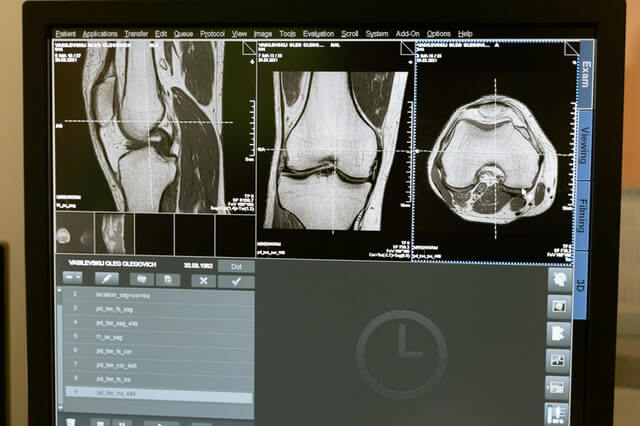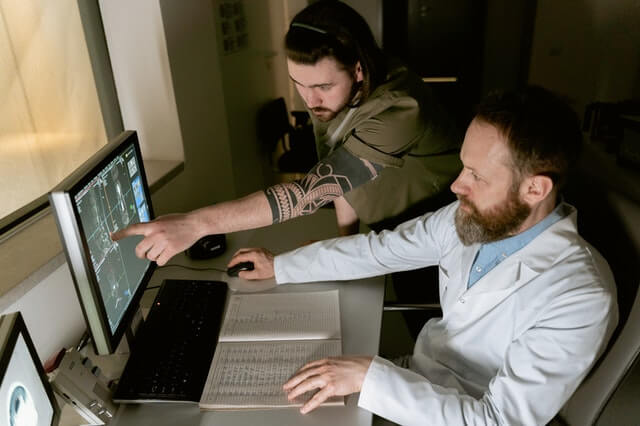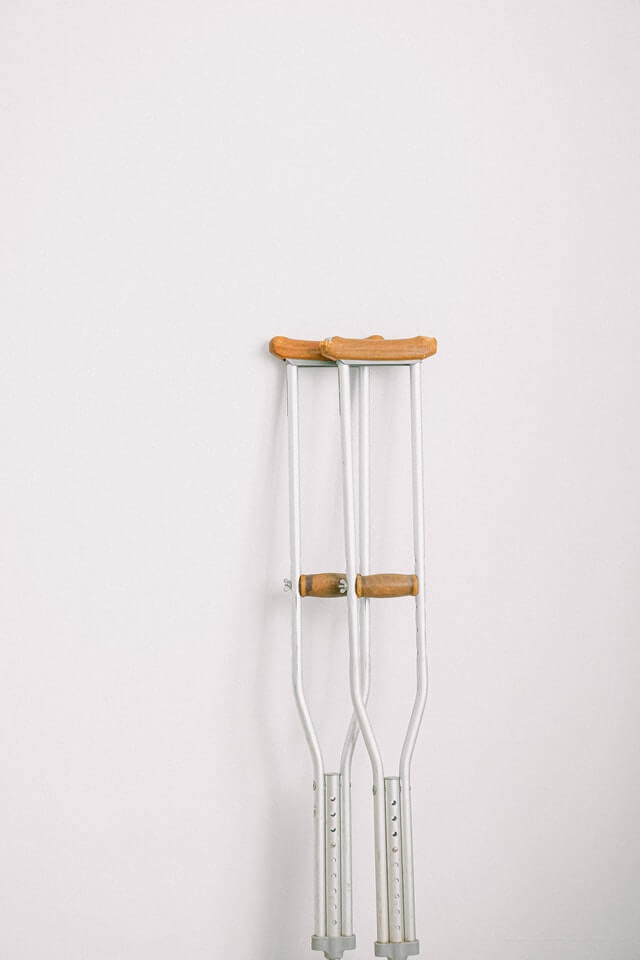DEXA Scan Questions and answers
DEXA or DXA scan can help determine if you have particular bone conditions or if you may develop them in the future.
Your specialist can provide suitable treatment options to help prevent bone degradation. DEXA scan is available at our clinics in London, Manchester, Bolton, Colchester Cambridge, Leeds.



What is a DEXA scan
A DEXA scan (dual-energy X-ray absorptiometry) is an imaging test that measures density (strength) of your bones. This is done by using very low levels of x-rays and measuring the mineral content of the bones in certain areas of the skeleton. The results can provide details about your risk for osteoporosis (bone loss) or bone fractures. This test can also measure your body composition, such as body fat and muscle mass.
What is a DEXA scan?
DEXA is an abbreviation for dual-energy x-ray absorptiometry. This type of scan measures the density, ie the strength, of bones. This is done by using very low levels of x-rays and measuring the mineral content of the bones in certain areas of the skeleton. The results can provide details about the risk of bone loss (osteoporosis) or bone fractures. This test can also measure body composition, eg body fat and muscle mass.
What can be detected by a DEXA scan / When is DEXA used?
The main reason to have the test is to find and treat serious bone loss, called osteoporosis, as well as to detect and/or prevent fractures and disability. DEXA scans are considered to be the most useful tests for helping to diagnose osteoporosis.
The results of a DEXA scan can be used to help a doctor diagnose a condition and to assess the effectiveness of previous treatment as well as to plan future treatment.
What happens during a DEXA scan?
During the scan, a large scanning arm is passed over the body to measure bone density in the center of the skeleton.
A bone density scan compares this bone density with the bone density expected for a healthy person of the same age, gender and ethnicity. The difference is calculated as a standard deviation (SD), to measures the difference between the actual and the expected value of bone density.
It is important to keep as still as possible during the DEXA scan, to achieve the highest possible quality of the images. You might also be asked to hold your breath at times. A DEXA scan of a single body part typically takes around 10-15 minutes.
DEXA scan versus other types of X-ray
A DEXA scan uses a very small dose of x-ray compared to a regular x-ray.
A DEXA scan is designed to measure density rather than produce a picture.
A regular x-ray is designed to produce a high quality picture and is a poor measure of density.
A DEXA scan uses CT scan technology and measures absorption of the x-ray to produce a bone density measurement
This measurement is compared to age- and ethnicity-matched norms.
An X-ray is a simple radiograph that makes an image, but is unable to quantify bone density.
How does a DEXA scan work?
A DEXA scan uses X-ray technology to determine the distribution of muscle mass, fat, water and bone in the body. Unlike other tools for measuring body composition, DEXA scan results are highly accurate and highly reproducible. The DEXA scan works by scattering two safe X-rays in very low doses at different energy levels through body tissues. The amount of radiation that passes through the tissue is measured by a detector. Then the computer determines how much fat, muscle, water or bone tissue and where it is all stored. A DEXA scan is the “gold standard” body composition test. It has the highest resolution and the shortest scanning time.
What is a contrast agent and when is it used?
To enhance the visibility of particular tissues relevant to a scan, a contrast agent – a dye – is sometimes injected into the bloodstream. However, as DEXA scans are for bones, a contrast agent is not usually applicable.
Nevertheless, a patient should wait at least seven days before a DEXA scan if he or she has been injected with contrast for a CT or MRI scan or has had a barium study.
Safety of a DEXA scan
Bone density scans are very safe as they use a low level of radiation, much lower than standard x-rays. The radiographer can therefore stay with you in the scanning room during the procedure. Despite being very safe, bone density scans are not recommended for pregnant women. Also, radiation exposure can add up over the period of one’s life, so it is best only to have the scan where a real risk of bone loss or bone fractures.
What are the risks and restrictions of a DEXA Scan?
A DEXA scan uses less than a tenth of the radiation dose of a standard chest x-ray, which is considered extremely low and generally safe for most people. Indeed, this amount of radiation is similar to the amount of background radiation that an average person receives in an ordinary day. However, any amount of radiation can harm an unborn baby. Therefore, as mentioned above, the DEXA scan should not be performed during pregnancy. Although exposure to excessive radiation can increase the risk of cancer, the amount of radiation used in a DEXA test remains so relatively low that the benefits are generally considered to outweigh the risks.
During the scan, a large scanning arm will be passed over your body to measure bone density in the center of the skeleton.
A bone density scan compares your bone density with the bone density expected for a young healthy adult or a healthy adult of your own age, gender and ethnicity.
The difference is calculated as a standard deviation (SD) score. This measures the difference between your bone density and the expected value.
What can be detect by a DEXA / When is DEXA used.
The main reason to have the test is to find and treat serious bone loss, called osteoporosis, and prevent fractures and disability. DEXA scans are considered to be the most useful tests for helping to diagnose osteoporosis. The test is quick and painless and usually takes 10 – 25 minutes.
Safety of the DEXA scan
Bone density scans are very safe as they use a low level of radiation, much lower than a standard X-rays. The radiographer can therefore stay with you in the scanning room during the procedure. Despite being very safe, bone density scans are not recommended for pregnant women.
DEXA Scan Prices
One part £229



